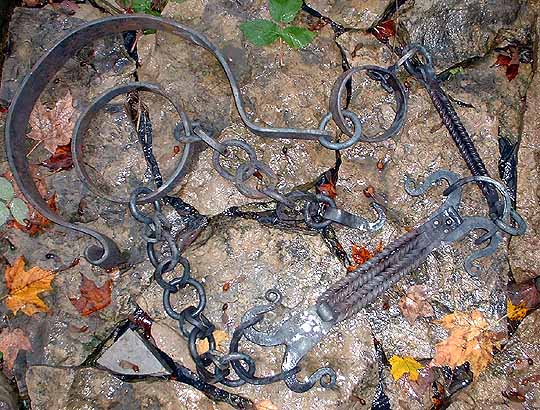
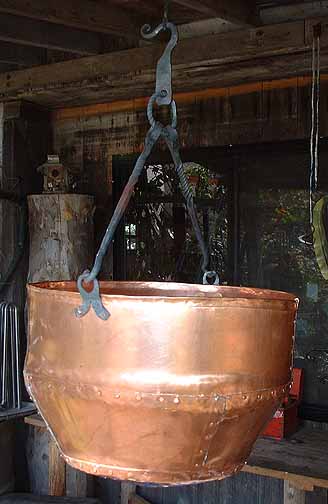
This is the largest of the pieces I have made for the Outlander production.
In use it is intended to hang off a main house beam roughly 8 inches in width, at a height of 8 1/2 feet above the floor. The most likely pot it will be used in combination with is the large copper cauldron also shown above. I have made a number of different pots for the production, and designed the hanger to allow for use of any of the various different sizes. Quite intentionally, I made limited use of round profile stock, sticking instead to square or flat as would be more likely for a smith during the Viking Age.
The overall inspiration for the hanger is the artifact found in the Sutton Hoo ship burial, which dates to 625 AD. This is a saxon royal burial, but decorative chain hangers have been found in a number of Viking Age burials as well. Although the Outlander hanger is shorter than Sutton Hoo, I used a number of the same chain elements in its construction. I wanted to take special care in the detailing on this specific object, as I suspect it may end up featured in some of the filming. Historically, these highly elaborate forgings were status symbols and presentation pieces, hanging in the central focal point of the hall over the fire.
In the overall photograph, you can see the flow of the elements. The hanger has been designed with a large hook at the top to allow for easy installation and removal from the beam. Bellow this is a roughly 4" diameter ring with a swivel mounted in it that allows the lower chain to rotate.
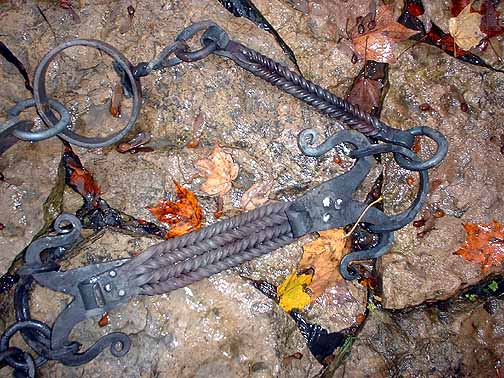
Below the swivel, there is a straight bar unit. This element is made of two bars, each of 3/8" square stock which have been twisted in alternate rotations. The ends of the bars are then forge welded, and the block flattened and folded to a small hook. Rings made of 3/8" round join the completed element to the chain.
The most elabaorate elements of the series are next. In use, this large bar and hook piece will hang at roughly eye height of the standing viewer. The form of this element is a bundle of four alternately twisted rods, forged to shape much the same as the single bar element described above. This unit is attached to a pair of spiral hooks at each end by means of three rivets. The individual hooks are formed from a piece of 1 1/2 x 3/16 " flat bar which was slit at one end and then drawn out. The two points were then formed to the reversal curve hooks. The opposite end was then drawn down to a taper, and this also formed into a curve. On the lower unit, that terminal curve is large enough to hook up the lower chain.
On both ends of the bar and hook element are a matching pair of 'flat 8' rings. These are formed of 1/4" square. First a large circle is formed and welded. This is then folded in half. The two folded ends are opened up to a small circle, and the balance of the curved half circle is tapped tightly closed. Again this is an element taken from the Sutton Hoo prototype.
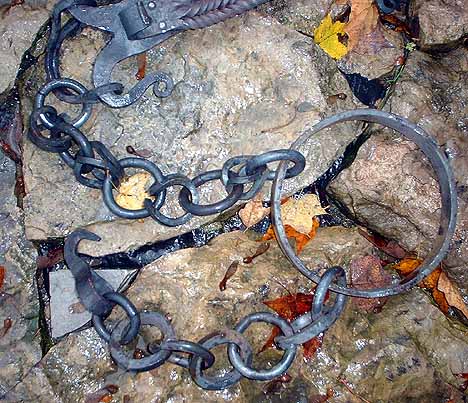
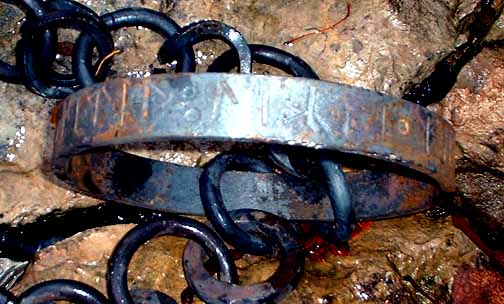
Just below the bar and hook element is a short length of chain made from a set of 'flat 8' style links joined by simple circles. The decorative links are similar to those described above, but in this case the finished link is a roughly 3 inch circle.
The lowest part of the chain is the working end, and is a simpler set of alternating round and square stock rings. It ends in a hook, formed from folding and welding a length of 3/4 x 3/16" flat stock.
In the centre is a large ring made of flat bar. I decided to sneak something in there for the Viking Age enthusiasts and die hard fans. The exterior of this ring is punched with a short text in runes. The text is in actual Old Norse, and reads:
KITIL • KIRthI • MIK / Ketil • Gerthi • Mik / 'Kettil Made This'. To those who have read much of the Wareham Forge or DARC web sites, you will recognize 'Kettil' as the characterization I use in museum presentations.




















No comments:
Post a Comment